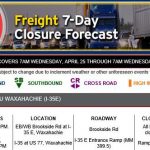Residents of smaller and low-density communities, as well as the elderly and disabled, have few alternatives to private car travel. While new on-demand mobility services, connected vehicle technologies, and smarter city initiatives are reshaping travel in cities, those in smaller towns and rural areas, those without smart phones and communication network access, and lower-income travelers lacking a variety of additional resources are at risk of being left behind. The goal of this outreach effort is to better understand and characterize under-served populations’ perceptions of mobility needs in urban and rural environments of the Pacific Northwest and to inform those communities about the opportunities for mobility improvement that a smart city could provide. This project will identify and work with representatives from different mobility under-served groups in Idaho, Oregon, Washington, and Alaska and will develop interactive materials to inform and educate the under-served groups about the potential improved mobility opportunities in connected-vehicle and smarter city environments. They will also collect data from the participants on their mobility challenges, perceptions, and experiences and map those data within a GIS database. They will then use the data to help identify smart city implications and potential solutions.
Principal Investigators:
Ahmed Abdel-Rahim, University of Idaho
David Hurwitz, Oregon State University
Eric Jessup, Civil and Environmental Engineering, WSU
Jeff Ban, Civil and Environmental Engineering, UW
Billy Connor, University of Alaska Fairbanks
Sponsor: PacTrans
Scheduled completion: March 2023



